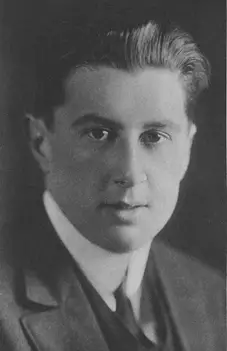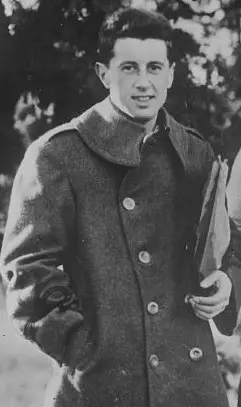Richard Norris Williams
First Class passenger

“"I heard the crack of a revolver shot from the direction where I had left Captain Smith. I did not look around...."
Richard "Dick" Norris Williams II, born January 29, 1891 and known generally as R. Norris Williams, was already a relatively famous American tennis player by the time he travelled aboard Titanic along with his father Charles Duane Williams. Aged 21, he was traveling first class from Geneva to Radnor, having embarked at Cherbourg.
Eventually rescued aboard collapsible A, Williams was on the forward starboard Boat Deck as the bridge dipped under. He published a personal account of his experiences in the May 11th 1997 edition of Main Line Life:
"..Presently we found ourselves on the Captain’s bridge – only two other people were there, Captain Smith and a quartermaster … The ship seemed to give a slight lurch; I turned towards the bow. I saw nothing but water with just a mast sticking out of it. I don’t remember the shock of the cold water, I only remember thinking “suction” and my efforts to swim in the direction of the starboard rail to get away from the ship. Before I had swam more than ten feet I felt the deck come up under me and I found we were high and dry. My father was not more than 12 or 15 feet from me. I heard the crack of a revolver shot from the direction where I had left Captain Smith; I did not look around …
“Jump,” Norris Williams yelled at his father.
"He started towards me just as I saw one of the four great funnels come crashing down on top of him. Just for one instant I stood there transfixed – not because it had only missed me by a few feet … curiously enough not because it had killed my father for whom I had a far more than normal feeling of love and attachment; but there I was transfixed wondering at the enormous size of this funnel, still belching smoke. It seemed to me that two cars could have been driven through it side by side. It was probably but a fraction of a second, then I jumped to the rail; the water was about two and a half to three decks down.”

The wave resulting from the funnel collapsing washed him toward collapsible A. he was later transferred to lifeboat 14. Like many in collapsible a he suffered from being waist -high in the freezing water to such an extent that a doctor aboard the Carpathia recommended both his legs being amputated which he refused. He later recovered and went on to win the 1912 United States mixed doubles (with Ms. Mary Browne).
Not only was he a tennis champion (1914 and 1916 he was United States singles champion, 1920 Wimbledon men's doubles champion, 1924 Olympic gold medalist) he served with distinction in the U.S. Army in World War I (awarded the Chevalier de la Legion d'Honneur and Croix de Guerre.) and later became a successful investment banker in Philadelphia. He died of emphysema on 2 June 1968, aged 77.
As for his account of Captain Smith - even though he did not actually see what happened, Bill Wormstedt notes that Williams "was in the right position at the right time to have heard something, and according to this account, he did"
There is no reason to doubt his account.
Verdict: